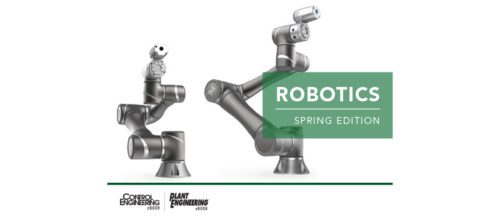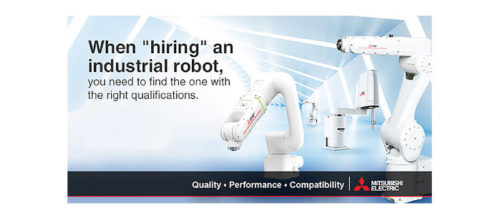Six mistakes to avoid with AMR technology
Taking a conservative and fiscally-sensible approach to AMR technology goes a long way in making sure to avoid disasters.
Autonomous mobile robots (AMR) are used to handle the transportation of material without the need for a human operator.
The use of autonomous mobile robots is becoming a necessity in almost every industry. The AMR industry is expected to become a $54 billion sector by 2023. AMRs are commonly used for automating transportation in the manufacturing sector and in distribution centers.
A slew of technological innovations goes into making AMRs a reality. Depending on the type of AMR, the units can use different navigation technologies. The suitable technology for AMR will depend on the specific application for which it is used.
The environment in which the AMR will operate also plays a huge role in the technology to be chosen.
Using AMR technology the wrong way
Using modern technology like AMRs in an active work environment is problematic. More often than not, there is no well-defined playbook for implementing AMRs. Plant managers and the engineers who design AMRs have to work with limited knowledge. Such problems are commonplace when it comes to novel technologies like AMRs.
The two most common ways of using AMRs wrongly are:
-
Choosing the wrong AMR for operation
-
Implementing AMRs improperly.
Improper implementation of AMR in a facility will have negative consequences. One major is the economics of facility operations: improper implementation of AMRs can hurt both the topline and bottom line of the firm. The other negative repercussion impacts the operations of the facility.
In the following sections, we will go through some of the most common mistakes people make in AMR implementation and how to sidestep those mistakes.
Mistake #1: Not having a plan
Using AMRs without a solid plan is one of the most common mistakes someone can make. Many times, operations managers implement AMRs for the wrong reasons. Sometimes they are following an industry fad.
Other problems include copying everything competitors or contemporary businesses do. Such illogical reasons cause AMR implementation without a solid plan on how to utilize AMRs.
AMR implementation is a significant decision that has many implications. Serious thought has to go into determining the need for AMR in a facility and how someone is going to use them. People need to be clear about the what, why, where, when and how of implementing AMRs.
Mistake #2: Lack of understanding of the AMR technology
Autonomous mobile robots are equipped with superior navigation permitting them to create a map of the whole facility and decide their routes as they move.
Also, AMRs use movement sensors to estimate the robot’s location over time. This approach may be pretty open to errors; a fast series of data, regular calibration of instruments and processing are required for this to be as correct as possible.
Financial constraints also play a substantial determining role. Using the wrong technology for an AMR installation is one of the gravest mistakes.
Mistake #3: Not thinking about ROI
AMRs are introduced for various operational benefits. These benefits eventually have to reflect on the firm’s finances. The financial benefits expected from investment into AMRs have to be defined well in advance. Following the fad and picking the wrong AMR technology happens when the return on investment of AMR is not actively pondered.
Every AMR implementation has to be financially modeled. The operational and economic benefits have to be converted to line items in the profit and loss statement. This analysis will give an estimated return on the investment required.
The implementation can be benchmarked against this required ROI. This makes it easier to determine the success and failure of an AMR implementation.
Mistake #4: Implementing AMR technology in a single go
Another common mistake observed is adopting AMRs in a single go. The recommended method of introducing AMR into a work environment is in a staggered manner. The limited workload is transferred to AMR. The effects of the changes are measured and analyzed. The rest of the implementation hinges on this analysis.
When AMRs are introduced in one go, it causes a huge disruption in how the facility operates. If AMR implementation fails due to unrelated reasons, it will be financially and operationally difficult to revert to earlier methods.
The financial outlay required for implementation also becomes a huge risk. In most instances, it is better to implement AMRs in a staggered manner to acclimatize the autonomous machines to the nuances of the facility.
Mistake #5: Sidelining employees
Some facility managers view AMR implementation as a way to completely eliminate human employees from operations. While it is true that AMRs will help replace some employees, they will not completely eliminate every employee. AMRs coexist with employees in most implementations.
People must gain the confidence of employees before the implementation. This will ensure employees will not sabotage AMRs in the workplace. Employees will naturally have many concerns when employers try to introduce autonomous robots. Employers have to address each of their concerns. This ensures that employees cooperate with the implementation and work harmoniously alongside AMRs.
Mistake #6: Not investing in continuous improvement
Many executives consider AMRs to be one-time investments that have to bear fruit till the end of time. But AMRs are constantly evolving due to the nature of machine learning and deep learning algorithms extensively used in every AMR installation.
A dedicated team has to be assigned for AMRs to monitor and facilitate enhancements in AMR operation. After the preliminary AMR implementation, companies have to be prepared for further technological and financial investment. Otherwise, the use of technology will get stunted and implementation will soon get redundant.

AGV vehicles are less expensive than AMRs and they could also be a great addition to your material handling fleet. Courtesy: Flexqube
Play right without a playbook
AMRs are essential for the implementation of logistics 4.0 concepts in a facility. Most of the problems arise as it is a novel technology. There are no well-established playbooks on how to implement AMRs for all situations.
A common sense approach goes a long way in avoiding disasters. This article has outlined some of the common mistakes and how to sidestep them. Taking a conservative and fiscally-sensible approach to AMRs goes a long way in making sure to avoid disasters.
Original content can be found at Plant Engineering.
Do you have experience and expertise with the topics mentioned in this content? You should consider contributing to our CFE Media editorial team and getting the recognition you and your company deserve. Click here to start this process.




